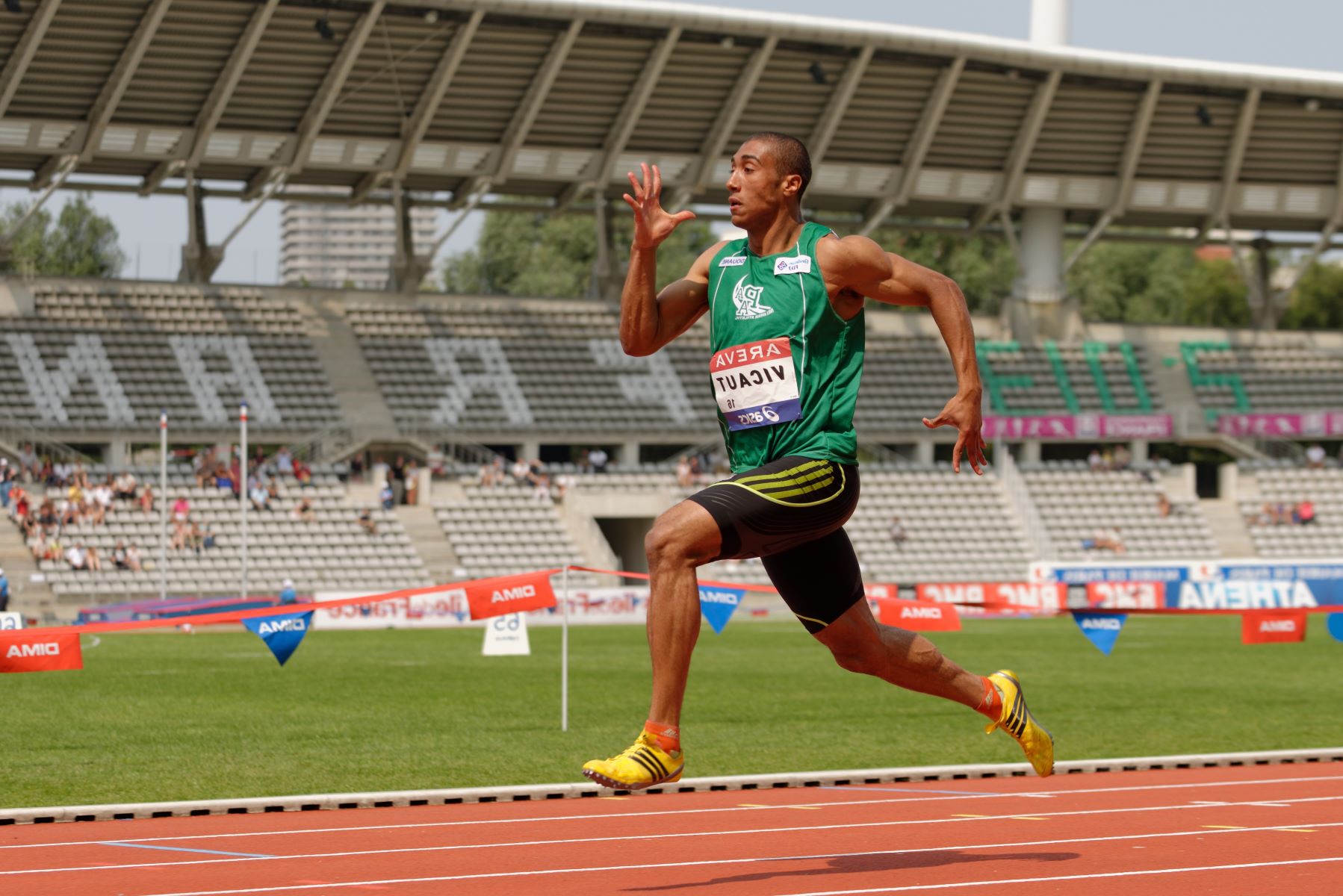Home>Health & Nutrition>What Are Some Ways To Alleviate Stomach Pain While Running?


Health & Nutrition
What Are Some Ways To Alleviate Stomach Pain While Running?
Published: February 22, 2024
Discover effective ways to relieve stomach pain while running with our expert health and nutrition tips. Stay comfortable and focused on your fitness goals.
(Many of the links in this article redirect to a specific reviewed product. Your purchase of these products through affiliate links helps to generate commission for Therunningadvisor.com, at no extra cost. Learn more)
Table of Contents
Understanding the Causes of Stomach Pain While Running
Stomach pain while running can be a distressing experience, often disrupting the enjoyment and benefits of this physical activity. Understanding the potential causes of this discomfort is crucial in finding effective solutions. One common culprit is improper pre-run nutrition. Consuming large or high-fat meals shortly before running can lead to stomach pain due to the body's struggle to digest the food while in motion. Additionally, dehydration can contribute to stomach discomfort during exercise. When the body lacks adequate fluids, blood flow to the stomach is reduced, impacting digestion and causing cramping.
Another factor to consider is the impact of breathing patterns on stomach pain. Inadequate breathing techniques, such as shallow or erratic breathing, can lead to increased pressure on the abdominal area, resulting in discomfort while running. Furthermore, the jostling motion of running can exacerbate pre-existing gastrointestinal issues, such as acid reflux or irritable bowel syndrome, leading to stomach pain.
It's important to recognize that individual differences play a significant role in experiencing stomach pain while running. Factors such as a person's fitness level, running intensity, and overall health can influence the likelihood of encountering this issue. By understanding these potential causes, runners can take proactive measures to address and alleviate stomach pain, allowing for a more enjoyable and fulfilling running experience.
Pre-Run Dietary Tips to Prevent Stomach Pain
Proper nutrition plays a pivotal role in preventing stomach pain during running. Implementing pre-run dietary strategies can significantly mitigate the risk of discomfort and enhance overall performance. Here are some valuable tips to consider before hitting the pavement:
1. Timing is Key
Consuming a meal too close to your running session can spell trouble for your stomach. Aim to eat a well-balanced meal at least 1-2 hours before running. This allows sufficient time for digestion, reducing the likelihood of stomach pain caused by undigested food jostling in the stomach during physical activity.
2. Opt for Easily Digestible Foods
Choosing easily digestible foods can make a substantial difference in preventing stomach discomfort. Prioritize carbohydrates, lean proteins, and healthy fats in your pre-run meal. Foods such as oatmeal, bananas, whole grain toast, or yogurt are excellent options that provide sustained energy without burdening the digestive system.
3. Mindful Portion Control
Overeating before a run can lead to bloating and cramping. Practice mindful portion control to ensure that you consume an adequate amount of food without overloading your stomach. Opt for smaller, balanced meals or snacks to fuel your body without causing digestive distress.
4. Hydration Matters
In addition to solid foods, adequate hydration is crucial for maintaining digestive comfort during running. Ensure that you are well-hydrated before your run by consuming water or a sports drink. However, avoid excessive fluid intake immediately before running to prevent the sensation of sloshing in the stomach.
5. Avoid High-Fat and High-Fiber Foods
Steer clear of high-fat and high-fiber foods in the hours leading up to your run. These types of foods can delay gastric emptying and lead to discomfort during physical activity. Instead, focus on easily digestible, low-fiber options to support optimal digestion and minimize the risk of stomach pain.
By implementing these pre-run dietary tips, runners can proactively reduce the likelihood of experiencing stomach pain while running. These strategies not only promote digestive comfort but also contribute to overall well-being and performance, allowing individuals to fully enjoy the physical and mental benefits of their running endeavors.
Hydration Strategies for Managing Stomach Pain
Proper hydration is a critical component of running performance and overall well-being. When it comes to managing stomach pain during running, strategic hydration practices can make a significant difference in alleviating discomfort and promoting digestive ease. Here are essential hydration strategies to effectively manage stomach pain while running:
1. Pre-Run Hydration Preparation
Before embarking on a run, it's essential to prioritize hydration in the hours leading up to the activity. Adequate pre-run hydration sets the stage for optimal fluid balance within the body, reducing the likelihood of stomach discomfort during exercise. Aim to consume water or a sports drink in the hours leading up to your run, ensuring that you are adequately hydrated without overloading your system with fluids immediately before the activity.
Read more: Possible Causes Of Knee Pain While Cycling
2. Sip, Don't Guzzle
During the run, it's crucial to maintain a steady intake of fluids to support hydration without overwhelming the stomach. Instead of consuming large volumes of water or sports drinks at once, opt for frequent, small sips at regular intervals. This approach helps to prevent the sensation of sloshing in the stomach, which can contribute to discomfort while running.
3. Electrolyte Balance
In addition to water, electrolytes play a vital role in maintaining proper hydration and supporting muscle function during running. Incorporating electrolyte-rich beverages or supplements can aid in balancing the body's electrolyte levels, preventing potential imbalances that may contribute to stomach pain. Sports drinks or electrolyte tablets can be valuable additions to your hydration strategy, especially during longer or more intense runs.
4. Post-Run Rehydration
After completing a run, rehydration is crucial for supporting recovery and minimizing post-exercise stomach discomfort. Focus on replenishing fluids lost during the run by consuming water or a recovery beverage that contains electrolytes. This post-run rehydration phase is essential for restoring fluid balance and promoting optimal digestive function, reducing the risk of lingering stomach pain.
5. Listen to Your Body
Individual hydration needs can vary based on factors such as sweat rate, environmental conditions, and personal physiology. It's important to listen to your body's signals and adjust your hydration strategy accordingly. Pay attention to thirst cues and urine color, as these indicators can provide valuable insights into your hydration status. By staying attuned to your body's needs, you can fine-tune your hydration approach to effectively manage stomach pain while running.
By integrating these hydration strategies into your running routine, you can proactively address and manage stomach pain, allowing for a more comfortable and enjoyable running experience. Prioritizing proper hydration not only supports digestive comfort but also contributes to overall performance and well-being, empowering you to fully embrace the physical and mental benefits of running.
Breathing Techniques to Reduce Stomach Discomfort
Effective breathing techniques can play a pivotal role in reducing stomach discomfort while running, promoting enhanced oxygenation, and minimizing the risk of abdominal distress. By incorporating mindful breathing practices, runners can optimize their respiratory function and alleviate the pressure on the abdominal area, fostering a more comfortable and sustainable running experience.
1. Diaphragmatic Breathing
Diaphragmatic breathing, also known as belly breathing, involves engaging the diaphragm to facilitate deep and efficient inhalation. This technique promotes the expansion of the lower lungs, allowing for increased oxygen intake while minimizing the upward pressure on the stomach. By consciously directing the breath into the lower abdomen, runners can reduce the likelihood of experiencing cramping or discomfort in the upper abdominal region during physical activity.
2. Rhythmic Breathing Patterns
Adopting rhythmic breathing patterns can contribute to a harmonious and balanced running experience, minimizing the potential impact of erratic breathing on stomach discomfort. One popular approach is the 3:3 breathing pattern, where runners inhale for three steps and exhale for three steps, creating a steady and controlled breathing rhythm. This technique helps to stabilize the body's oxygen supply, reducing the strain on the respiratory and digestive systems, consequently mitigating stomach pain during running.
3. Mindful Exhalation Techniques
Conscious focus on exhalation can aid in releasing tension and reducing the pressure on the abdominal area while running. By emphasizing complete and controlled exhalation, runners can support the body's natural relaxation response, potentially alleviating muscle tension and discomfort in the stomach region. Mindful exhalation techniques can enhance overall breathing efficiency and contribute to a more relaxed and comfortable running experience.
4. Posture and Breathing Alignment
Maintaining proper posture and alignment during running is essential for optimizing breathing mechanics and minimizing abdominal strain. Runners should strive to maintain an upright posture with relaxed shoulders and an engaged core, allowing for unrestricted breathing and minimizing the potential impact of poor posture on stomach discomfort. By aligning breathing with optimal posture, runners can reduce the likelihood of experiencing cramping or discomfort in the abdominal area, enhancing overall running comfort.
5. Progressive Relaxation Breathing
Incorporating progressive relaxation techniques into breathing practices can aid in reducing overall muscle tension, including the muscles in the abdominal region. By consciously engaging in progressive relaxation during running, runners can release tension in the abdominal muscles, potentially alleviating discomfort and promoting a more relaxed and fluid running experience. This approach integrates breathing with targeted muscle relaxation, fostering a harmonious and comfortable running rhythm.
By integrating these breathing techniques into their running routine, individuals can proactively reduce stomach discomfort, optimize respiratory function, and enhance overall running comfort. These mindful practices not only contribute to physical well-being but also promote a deeper connection between the body and breath, fostering a more enjoyable and sustainable running experience.
Post-Run Recovery Methods for Alleviating Stomach Pain
After completing a demanding run, prioritizing post-run recovery is essential for alleviating stomach pain and promoting overall well-being. Implementing effective recovery methods can significantly mitigate the discomfort experienced during and after running, allowing individuals to fully embrace the physical and mental benefits of their exercise routine.
1. Gentle Cooling Down
Engaging in a gentle cooldown routine following a run can aid in reducing the likelihood of post-exercise stomach discomfort. Gradually transitioning from running to walking allows the body to adjust and recalibrate, preventing abrupt stops that may contribute to abdominal distress. Incorporating light stretching exercises targeting the abdominal area can further promote relaxation and alleviate muscle tension, supporting post-run digestive comfort.
2. Mindful Rehydration
Post-run rehydration is crucial for restoring fluid balance and minimizing the risk of lingering stomach pain. Emphasize the consumption of water or electrolyte-rich beverages to replenish fluids lost during the run. Mindful rehydration supports optimal digestive function and aids in alleviating post-exercise discomfort, ensuring that the body remains adequately hydrated for efficient recovery.
3. Nutrient-Rich Recovery Snacks
Consuming nutrient-rich recovery snacks can aid in replenishing energy stores and supporting digestive ease after a run. Opt for easily digestible options such as bananas, yogurt, or whole grain toast to provide essential nutrients without burdening the digestive system. These snacks facilitate the replenishment of glycogen stores and aid in muscle recovery, contributing to overall post-run comfort.
4. Abdominal Massage and Relaxation Techniques
Incorporating gentle abdominal massage and relaxation techniques into post-run recovery can alleviate muscle tension and promote digestive comfort. Applying light pressure in a circular motion to the abdominal area can aid in releasing tension and reducing discomfort. Additionally, engaging in deep breathing exercises and progressive relaxation techniques can further support abdominal muscle relaxation, fostering a sense of ease and comfort following a demanding run.
5. Reflective Rest and Recovery
Allowing the body adequate time for rest and recovery is essential for minimizing post-run stomach pain. Embrace moments of reflective rest to facilitate physical and mental rejuvenation, supporting the body's natural recovery processes. Prioritize quality sleep and relaxation to optimize overall well-being and aid in the alleviation of post-exercise discomfort, ensuring that the body is adequately prepared for future running endeavors.
By integrating these post-run recovery methods into their routine, runners can proactively address and alleviate stomach pain, fostering a more comfortable and sustainable running experience. These strategies not only support physical recovery but also contribute to overall well-being, empowering individuals to fully embrace the benefits of their running endeavors.











